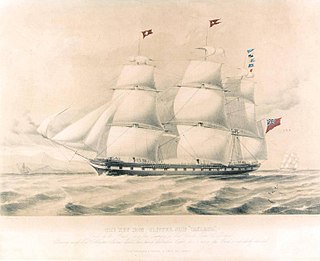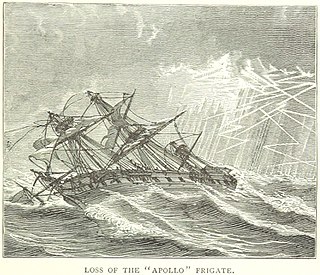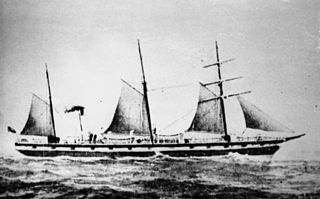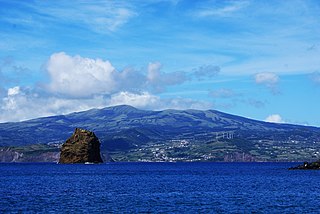
Pamir was a four-masted barque built for the German shipping company F. Laeisz. One of their famous Flying P-Liners, she was the last commercial sailing ship to round Cape Horn, in 1949. By 1957, she had been outmoded by modern bulk carriers and could not operate at a profit. Her shipping consortium's inability to finance much-needed repairs or to recruit sufficient sail-trained officers caused severe technical difficulties. On 21 September 1957, she was caught in Hurricane Carrie and sank off the Azores, with only six survivors rescued after an extensive search.

RMS Tayleur was a full-rigged iron clipper ship chartered by the White Star Line. She was large, fast and technically advanced. She ran aground off Lambay Island and sank, on her maiden voyage, in 1854. Of more than 650 aboard, only 280 survived. She has been described as "the first Titanic".

Marco Polo was a three-masted wooden clipper ship, launched in 1851 at Saint John, New Brunswick. She was named after Venetian traveler Marco Polo. The ship carried emigrants and passengers to Australia and was the first vessel to make the round trip from Liverpool in under six months. Later in her career, the ship was used as a cargo ship before running aground off Cavendish, Prince Edward Island, in 1883.

Jean-David Nau, better known as François l'Olonnais, was a French pirate active in the Caribbean during the 1660s.
The Spanish Armada in Ireland refers to the landfall made upon the coast of Ireland in September 1588 of a large portion of the 130-strong fleet sent by Philip II to invade England.
Commerce was a Connecticut-based American merchant sailing ship that ran aground on 28 August 1815 at Cape Bojador, off the coast of Morocco. Far more famous than the ship itself is the story of the crew who survived the shipwreck, who went on to become slaves of local tribes who captured them.

HMS Apollo, the fourth ship of the Royal Navy to be named for the Greek god Apollo, was a fifth-rate frigate of a nominal 36 guns. She was the name ship of the Apollo-class frigates. Apollo was launched in 1799, and wrecked with heavy loss of life in 1804.

The Georges Valentine Shipwreck Site is the site of the historic shipwreck of an Italian barkentine off the coast of Hutchinson Island in Martin County, Florida, with the nearest landmark being the House of Refuge at Gilbert's Bar.

HMSAthenienne was a 64-gun third-rate ship of the line of the Royal Navy. She was the former Maltese ship San Giovanni, which the French captured on the stocks in 1798 and launched and commissioned as Athénien. The Royal Navy captured her at or prior to the surrender of Valletta, on 4 September 1800, and took her into service as Athenienne. She was wrecked near Sicily, with great loss of life, in 1806.

SS Gothenburg was an iron-hulled sail- and steamship that was built in England in 1854 and sailed between England and Sweden until 1862. She then moved to Australia, where she operated across the Tasman Sea to and from New Zealand until 1873, when she was rebuilt. After her rebuild, she operated in the Australian coastal trade.

The Nathan F. Cobb was a three-masted schooner named after the shipbuilder and founder of Cobb's Salvaging Company whose many rescues of stranded ships help lead to the formation of the United States Life-Saving Service. Despite its namesake's history of shipwreck rescues, the Nathan F. Cobb capsized in heavy seas on 1 December 1896 en route from Brunswick, Georgia to New York with a cargo of timber and cross ties. The cook and a shipmate drowned when they were swept overboard in violent seas. The crew righted the vessel by removing the three masts and they drifted for four days until they became grounded on a sandbar off Ormond Beach, Florida. Rescue attempts led to the drowning of volunteer Fred Waterhouse, whose body was never recovered, but no other crew members were lost. A plaque commemorates Fred Waterhouse's rescue efforts. The Cobb Cottage, a structure built using materials salvaged from the ship, is part of Ormond Beach's Historic Trail.

The wreck of the Grosvenor, an East Indiaman, occurred on 4 August 1782 on the Pondoland coast of South Africa, north of the fgof the Umzimvubu River. The shipwreck was close to the place where the Portuguese ship, São João, had gone down more than two centuries earlier on 8 June 1552. The Grosvenor was a three-masted ship of 729 tons on her return voyage to England when she was wrecked, carrying a crew of 132 and 18 passengers, and a cargo valued at £75,000. Of the 123 survivors, only 18 reached Cape Town and were repatriated, the remainder dying of their privations or joining with tribes. Four survivors, Robert Price, Thomas Lewis, John Warmington, and Barney Larey, eventually got back to England.

A castaway depot is a store or hut placed on an isolated island to provide emergency supplies and relief for castaways and victims of shipwrecks.

SS Delhi was a steamship of the Peninsular & Orient Line (P&O) that was lost off Cape Spartel, northern Morocco, at the entrance to the Strait of Gibraltar, on 12 December 1911. Among the passengers was Alexander Duff, 1st Duke of Fife, whose subsequent death in Egypt was ascribed to ill-health caused during the wreck, and his family, the Princess Royal and daughters Princesses Alexandra and Maud.

The Battle of the Strait of Gibraltar was a naval action off Gibraltar on 24th of April, 1591. A fleet of three English merchant vessels escorted by a larger armed merchant vessel Centurion was attacked by five Spanish galleys. Ultimately, the Spanish were repelled, but not before the English vessel Dolphin was sunk by one of the galleys.

SS Utopia was a transatlantic passenger steamship built in 1874 by Robert Duncan & Co of Glasgow. From 1874 to 1882 she operated on Anchor Line routes from Glasgow to New York City, from Glasgow to Bombay and from London to New York City. After 1882 she carried Italian immigrants to the United States.

The Narrative of Robert Adams is a memoir by American sailor Robert Adams first published in 1816. The narrative is the story of the adventures of Adams, then a twenty-five-year-old American sailor who claimed to be enslaved in North Africa for three years, from 1810 to 1814, after surviving a shipwreck. He was said to have finally been ransomed by the British Consul, where he eventually made his way to London. It was there that, as a random beggar on the streets, he was "discovered" by the Company of Merchants Trading to Africa, where he narrated the full details of his adventure.

The Action of Faial or the Battle of Faial Island was a naval engagement that took place on 22–23 June 1594 during the Anglo-Spanish War in which the large and richly laden 2,000-ton Portuguese carrack Cinco Chagas was destroyed by an English fleet after a long and bitter battle off Faial Island in the Azores. The carrack, which was reputedly one of the richest ever to set sail from the Indies, was lost in an explosion which denied the English, as well as the Portuguese and Spanish, the treasure.
The Battle of the Levant Convoy was a naval engagement of the French Revolutionary Wars fought on 7 October 1795. During the battle, a powerful French squadron surprised a valuable British convoy from the Levant off Cape St Vincent on the coast of Portugal. The convoy was weakly defended, and although the small escort squadron tried to drive the French back, they were outmatched. In the ensuing action one of the British ships of the line and almost the entire convoy was overrun and captured. The French commander, Commodore Joseph de Richery, then retired to the neutral Spanish port of Cádiz, where he came under blockade.















